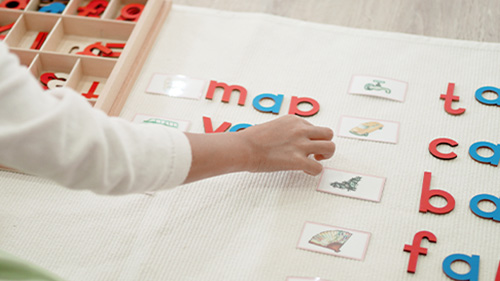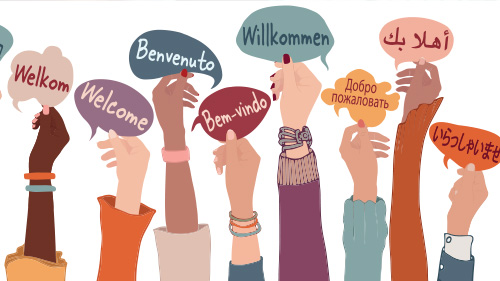What's an Ethnolect? And Why Does It Belong in Your ELA Classroom?
As middle school educators, we know the moment when a learner comes alive in class. Maybe they're debating a character's motivation or crafting a...
AP & Honors Mathematics
Explore Wiley titles to support both AP and Honors mathematics instruction.
Literacy Skills & Intensive Reading
Connections: Reading – Grades 6–12
Empower student success with a proven intensive reading program that develops strong reading skills in striving readers.
Drama, Speech & Debate
Basic Drama Projects 10th Edition
Build students’ confidence and competence with comprehensive, project-based theatre instruction.
Literature
Connections: Literature
Support learners as they study dynamic, relevant texts and bring the richness of diverse voices to students through literature.
Literature & Thought
Develop critical thinking, reading, and writing across literacy themes, genres, historical eras, and current events.
Language Arts
Vocabu-Lit® – Grades 6–12
Help students build word power using high-quality contemporary and classic literature, nonfiction, essays, and more.
Connections: Writing & Language
Help students develop grammar, usage, mechanics, vocabulary, spelling, and writing and editing skills.
Reading/English Language Arts
Measuring Up to the English Language Arts Standards
Incorporate standards-driven teaching strategies to complement your ELA curriculum.
English Language Learners
Measuring Up for English Language Learners
Incorporate research-based best practices for ELLs with an approach that includes a focus on language acquisition strategies.
Mathematics
Measuring Up to the Mathematics Standards
Incorporate standards-driven teaching strategies to complement your mathematics curriculum.
Foundations
Measuring Up Foundations
Help students master foundational math skills that are critical for students to find academic success.
Science
Measuring Up to the Next Generation Science Standards
Give students comprehensive NGSS coverage while targeting instruction and providing rigorous standards practice.
Assessment
Measuring Up Live
Deliver innovative assessment and practice technology designed to offer data-driven instructional support.
For a better website experience, please confirm you are in:
3 min read
Dr. Almitra Berry Mar 13, 2024 2:04:00 PM

When I think about the success stories of my middle school emergent bilingual learners, I can’t help but smile. What about you? Sure, there were challenges – my challenges in providing instruction, theirs in learning. But the joy of overcoming those challenges is worth all the clouds in the sky.
Last post I wrote, “As educators, we must be prepared to create an inclusive learning environment that responds to learners from diverse cultural backgrounds in a manner that respects, affirms, and validates not only who those learners are but all that they bring to the classroom.”
So, I thought I’d share two success stories that showcase how socio-emotional support can inspire progress via an inclusive classroom culture.
Samnang (a pseudonym) was Cambodian. He spoke Khmer but could not read or write it. He had a smile that would light up the room and melt your heart. And although he had been in our school since kindergarten, he seemed stuck at WIDA’s emerging level of proficiency. He had great BICS but very little CALP. Layer onto that a reading level of grade 2 at the beginning of the year.
It took a comprehensive approach to bring Samnang – and many of his classmates – to grade level that year. Two strategies immediately come to mind when I think of him:
One, I established a classroom culture that was psychologically safe for everyone to learn. That was critical because I did have my learners read aloud individually, as well as read chorally. It gave me additional opportunities to assess their reading fluency skills and provide support.
Now, a lot of frontloading took place for their reads to happen successfully, but the culture meant that when someone struggled or made a mistake, no one laughed. No one.
Learners provided one another space to engage in the second strategy I think of when I think of Samnang: decoding an unknown word in connected text.
And while I cannot remember the word he stumbled on while reading something about ancient India from our social sciences text, I do remember what he did. He held his hand in a stop signal and said, “Wait!” so I didn’t offer him a correction. He sounded out the word, first sound by sound, then by syllables. He read the word and looked at me for affirmation, which I gave. And with this gigantic smile, he said, “I’ll read the sentence again.”
Samnang finished the year on grade level. He developed CALP. And while we didn’t assess our EBLs formally at the end of the year, I would place him at bridging.
Haniya (a pseudonym), a Pakistani girl who joined my classroom well into the first semester, forever inspires me. Haniya was a newcomer, had no formal education, and spoke Urdu; her father was an Imam. Unlike any other child at our school, Haniya wore a hijab. And her father made it clear that she could not so much as sit next to, in front of, or behind a boy.
Challenge accepted!
Haniya had neither BICS, nor CALP. Her reading level was pre-primer. And being in an American, co-ed, multilingual, multicultural classroom was a huge culture shock! In a district that served more than 35,000 learners in a multicultural city in California, I could not find a single person who spoke Urdu.
I was on my own.
Just me and my strategies, along with a reading endorsement and a couple of language development credentials that said I should be able to handle this.
To say that Haniya was a sponge would be a gross mischaracterization. I leaned into every SDAIE strategy I knew. I blended my reading intervention with language development strategies. We had no pull-out or push-in language development supports, so I used individual and small group instruction to provide her with explicit instruction in the English language.
Fortunately, Haniya – like Samnang - was able to benefit from that safe classroom culture. Several of my Latina learners had gone through the newcomer experience themselves and took her into their circle.
I also had a robust classroom library with books labeled with their Lexiles, from 150L to 1520L. She started at the beginning.
And she read. And read. And read.
She read to me. She read at home.
Her silent period was extraordinarily abbreviated. She engaged in her small group instruction. She started speaking in whole class settings.
It was not easy to provide the level of instruction she needed to thrive, but it was wonderfully rewarding. Haniya left 6th grade reading not on grade level, but close. Her BICS were strong, her CALP appropriate for her reading level, and her language skills at the WIDA level of expanding.
When I look at the WIDA Can Do Descriptors for grades 6 – 8 or any other state’s English proficiency maps and think about how far those two went, and all our EBLs can go in one year with solid instruction, I can’t help but smile.
Affirm. Validate. Respect. What’s your success story for this year?
Dr. Almitra L. Berry is an educational consultant, author, and podcaster. She is the emergent bilingual consultant for Connections: English Language Arts. Dr. Berry extensively covers emergent bilingual learners in her book Effecting Change for Culturally and Linguistically Diverse Learners and several Educational Equity Emancipation podcast episodes.

As middle school educators, we know the moment when a learner comes alive in class. Maybe they're debating a character's motivation or crafting a...

Do you ever have one of those days where you ponder, “What on Earth am I doing, and am I doing it right???” I did. Often. And they were often...

It’s that time! The school year is beginning and you’re ready to welcome up to 180 new learners into your classroom. Whether you’re in your first...

The summer break is winding down, and soon you'll be setting up your classroom for another year of learning adventures. Whether you're a first-year...

The classroom community…is it worth the time and energy? This is not a rhetorical question. The answer is yes.
.jpg)
Congratulations! You’re well into the first semester now. You’re developing new and solid relationships with your learners and creating a classroom...

In American K-12 public schools, English language learners (ELLs) make up over 10% of students. 10% may not sound like much, but that’s over 5...

Walk into a middle school classroom during a lively literature circle and you’ll hear questions, laughter, debate, and—most important—learners...

As spring break approaches, maintaining classroom control can feel like a herculean task. Survive the 'spring fever' with these expert classroom...

What happens when we stop seeing language diversity as a barrier and start embracing it as our greatest classroom asset?

Back in the days before television screens were flat, before we had televisions in every room of the house, before crazy high screen resolutions let...

With so much heated debate over the concept of teaching to the test, it almost seems counterintuitive to ask teachers to assess their students even...
